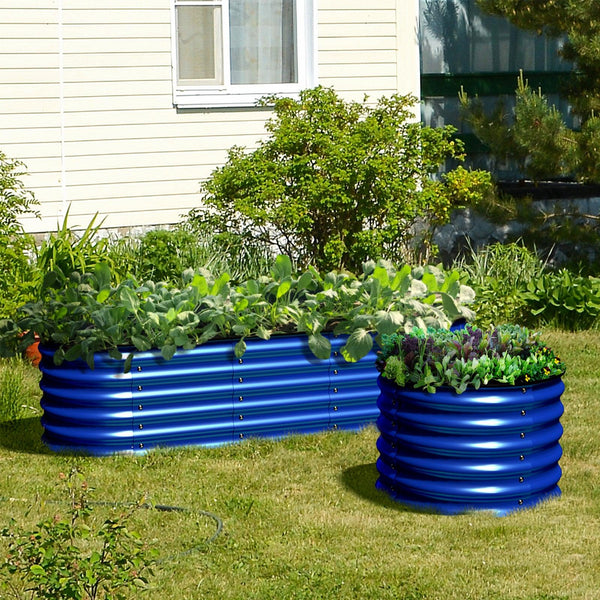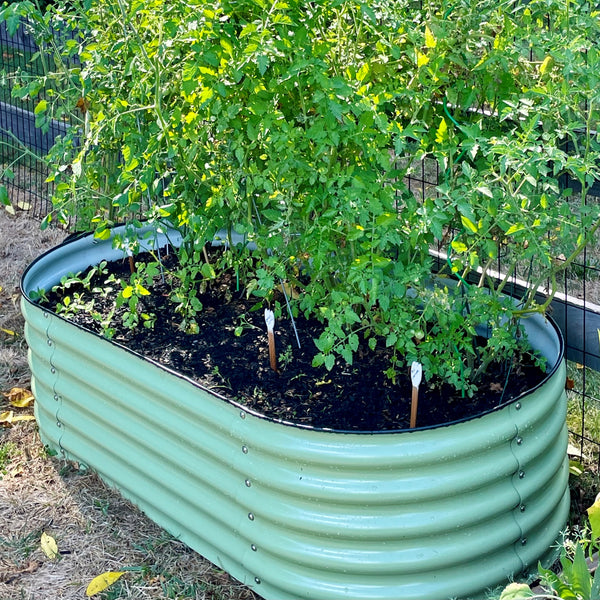Tips from Olle Garden Bed: Optimize Your Garden Based on the Climate Zone You Live In
Climate zones help gardeners determine what plants they can successfully grow in their area. For best results, it is important to consider your specific climate zone when planning your garden. It will affect plant growth, watering requirements and maintenance needs. The following content also has some reference value for raised garden beds.
In the best case, you will choose plants that are adaptable or native to your area.
Knowing the local climate will help you know when to start the growing season, how to calculate rainfall, find the correct temperature range, and ensure the correct time for pruning, fertilizing, and using fungicides and pesticides when needed.
Here's what you need to know about climate zones and how they affect the performance and appearance of your garden.

Climatic region interpretation
Few plants can survive in all weather conditions. Some need more sunshine, and some need more rain. Some need colder weather to pass the dormancy period, while others need to wither with the first frost. Therefore, to ensure that your garden plants thrive, you should pay special attention to your climate zone before planting anything.
Your climate zone is determined by the average summer and winter temperatures, rainfall, humidity, and the length of the growing season. Even mountains, lakes and areas close to large cities can affect your climate zone.
If you do not consider the climate zone before choosing plants, your garden may appear desolate and barren.
Climate types in the United States
Although the weather conditions in each region of the United States are changing every day, they still have a largely predictable pattern, including repeated average temperature and humidity levels. It is these models that define different climatic zones.
- Tropical
The tropical climate is hot and humid. Its temperature is more than 64 ° F, and its annual precipitation is more than 59 ".
If you are in Hawaii or South Florida, your garden has a tropical climate.
Plants suitable for this area
You can have a range of different plant species in a tropical garden, including:
Ensete (Ensete ventricosum)
Rubber plant (Ficus elastica)
Palmetto palm tree (Sabal)
Golden shower (Cassia fistula), and more.
- Dry climate
The dry climate is characterized by long, hot and dry summer and mild winter. Therefore, you need to look for plants that can survive for a long time without too much water.
Most of the southwest of the United States belongs to the dry climate zone.
Plants suitable for this area
If your garden is in a dry climate, you will need to look for stronger plants that can resist drought to some extent, including beans, such as:
Peas, Beans, Lentils, Eggplants, Tomatoes and okra.
You can also plant drought resistant trees, such as Hackberry (Celtisocidentalis), Eastern Redcedar (Juniperus virginiana) and BurOak (Quercus macrocarpa).
- Wet subtropical mid latitude
The humid subtropical mid latitude climate is very suitable for designing a sweet green garden. With its mild winters and warm, humid summers, you will find it easy to grow almost anything in your garden.
Many southern and midwestern states, as well as parts of California and the Pacific Northwest, belong to humid subtropical mid latitude climate regions.
Whether you want to plant tomatoes and pumpkins, apples and strawberries, or simple evergreen trees and shrubs, in this climate, it should be no problem to turn the garden into a small paradise.
Plants suitable for this area
In the humid subtropical mid latitude climate, you will find some of the most common plants including:
Wutong occidentalis
Daifen
Sugar Maple
Hydrangea cone (hydrangea)
And Vanhouffespirea (Spiraeaxvanhouttei)
Of course, you can also create a garden full of fruits, vegetables and vegetables. Edible spring onions can be an excellent supplement to your garden, with gorgeous flowers and great nutritional value. Ideally, autumn is the best season to plant allium, because they have enough time to grow strong roots before winter.

- Mid latitude of humid continent
The humid continental mid latitude region has typical cold winter and warm summer. It is well known that in the coldest months, the temperature will drop to - 22 ° F in winter, while it is easy to reach 90 ° F or higher in summer.
The humid continental mid latitude climate zone exists in the northeastern part of the United States, the northern states of the midwest and parts of the west.
If you are in one of these areas, you can easily play with many garden ideas.
Plants suitable for this area
Considering that the winter in the humid mid latitude regions of the continent will still become very severe, you still need some cold resistant plants. Some of your options include:
Smooth Hydrangea (Hydrangea Tree Garden)
Elaeagnuscommutata
American cranberry shrub (Viburnum trifolium)
Common Juniper (Juniper)
And compositae (solid).
In warm months, you can grow many fruits and vegetables, although you may need to give them some shelter in winter.
- Polar
As the name implies, polar regions are defined by their cold weather throughout the year. In the coldest month of the year, the temperature can easily drop below - 30 ° F, while in the hottest month, the temperature rarely rises above 50 ° F.
If you are in northern Alaska, your garden is in the polar region.
Plants suitable for this area
Despite the harsh and long winter, you can plant many things in the polar garden. Lapland Rose Bay (Rhododendron) is one of the most eye-catching polar flowers. It blooms in the middle and late June, but you can plant more plants:
Dwarf birch
Trembling aspen
Salix reticulata (Willow reticulata)
Pennsylvania colorful foil, to name just a few.
- Highland
Highland is a unique climate zone, with hot and dry summer and long and cold winter. The specific climatic conditions will vary according to your altitude, but you can expect sufficient rainfall throughout the year.
The area around the Rocky Mountains and Nevada Mountains belongs to the highland climate zone.
Plants suitable for this area
You can beautify your Highland Garden with a range of perennial flowers and evergreen trees and shrubs, including:
Hemerocallis fulva (Hemerocallis fulva)
Cat Mint (Nipperta)
Heart Bleeding (Spectacular Butterfly)
Pines (Pinaceae) and so on.
Identify your cold zone
Although you should always use climate zones to determine which plants to plant in your garden, you can also rely on your cold zone. The cold resistant area distinguishes different planting areas according to the average minimum temperature in winter. You will usually find cold resistant areas (not climatic areas) on the nursery pots of plants.
There are 13 cold resistant regions between the United States and Canada. The first region is the coldest and the thirteenth region is the hottest. The temperature of each area is about 10 degrees higher than that of the previous area.

Types of cold resistant areas and what they are most suitable for
It goes without saying that your cold resistant area will greatly affect the performance and appearance of your garden. Attempts to plant plants specifically designed for hot climates in Zones 1 to 5 may lead to failure. This is also true if you try to plant plants originating in cooler climates in warmer regions.
The cold resistant zone usually follows the north-south pattern. Region 1 corresponds to the polar climate, while region 13 corresponds to the tropical climate.
If you want to design your dream garden, you need to pay special attention to the cold tolerance of your garden and the plants you choose.
Planting native plants in your area
When designing your garden, pay attention to your cold tolerance and climate zone, which will have a great impact on whether your plants can thrive.
If you want a green and sweet garden, you need to find the plants that best suit your location. As a general rule of thumb, it is best to plant native plants in your area.
Find your location on the climate and cold resistance map and plant your garden accordingly.
